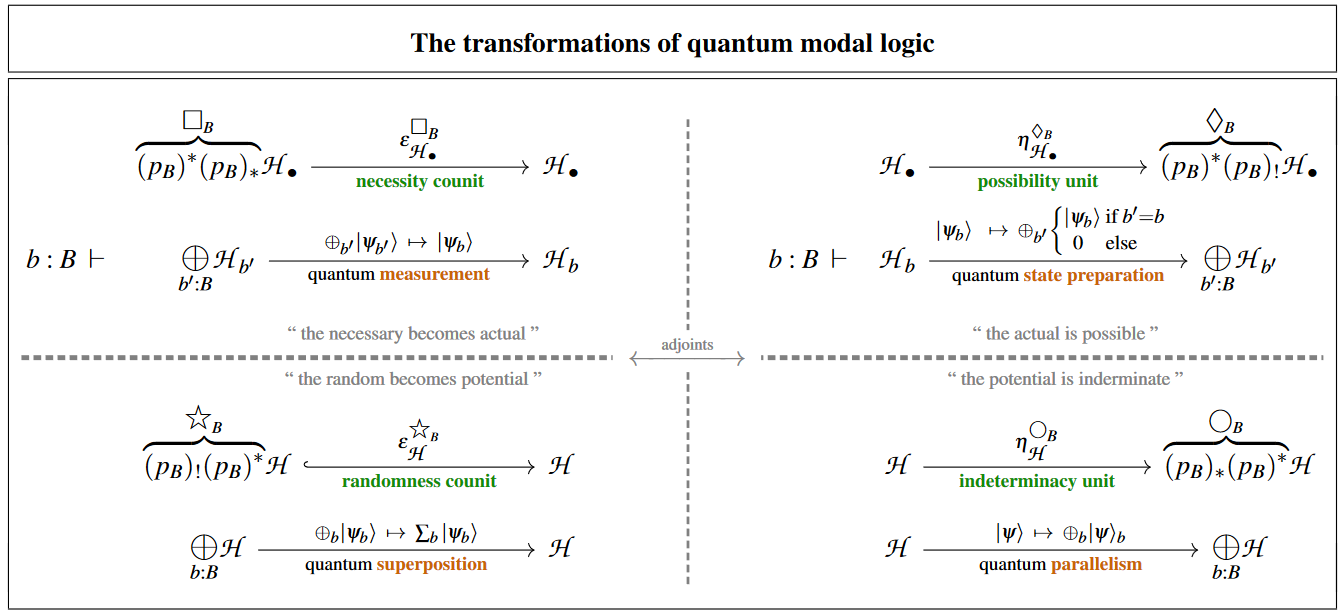nLab quantum superposition
Context
Physics
physics, mathematical physics, philosophy of physics
Surveys, textbooks and lecture notes
theory (physics), model (physics)
experiment, measurement, computable physics
-
-
-
Axiomatizations
-
Tools
-
Structural phenomena
-
Types of quantum field thories
-
Contents
Idea
In quantum theory the state of a physical system is given by a vector in a complex vector space (usually a Hilbert space). This means that given any two states and , their sum, the vector , also represents a state. This is called the quantum superposition of the two states.
If these quantum states are thought of as wavefunctions solving a linear differential equation such as the Schroedinger equation, Dirac equation, Klein-Gordon equation or Tomonaga-Schwinger equation, their quantum superposition is an example of the general principle of superposition of solutions to linear differential equations.
The concept of quantum superposition is at the heart of what makes quantum physics peculiar, notably via the phenomenon of entanglement.
The various fundamental quantum physics phenomena at play here may be identified with four modal-units of quantum modal logic (as discussed at quantum circuits via dependent linear types):

| quantum measurement | quantum state preparation |
| quantum superposition | quantum parallelism |
Related concepts
References
See also
- Wikipedia, Quantum superposition
Last revised on January 13, 2023 at 22:36:23. See the history of this page for a list of all contributions to it.